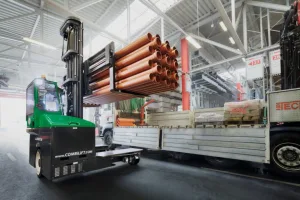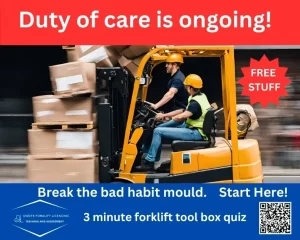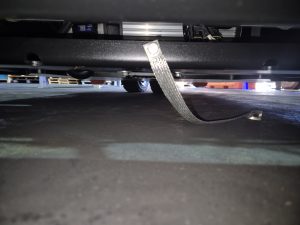Virtual Reality in forklift training.

Introduction: In recent years, I’ve observed a significant shift in the field of training and assessment towards innovative technologies, with Virtual Reality (VR) emerging as a promising tool for skill development. In this blog post, I’ll delve into the potential applications of VR in training individuals to obtain a high-risk work license for operating a forklift in Australia. Specifically, I’ll explore whether VR could replace traditional on-the-job training and its impact on safety, efficiency, and overall learning outcomes.
- Enhancing Realism in Training: One of the key advantages of VR lies in its ability to simulate realistic scenarios. VR can replicate diverse workplace environments, allowing trainees to navigate through challenging situations, such as tight spaces, varying load sizes, using a variety of attachments and interacting with other moving equipment. This enhanced realism contributes to better prepared operators.
- Mitigating Risks in Virtual Environments: Safety is paramount in high-risk work environments. VR training provides a safe and controlled setting for trainees to learn and make mistakes without real-world consequences. The potential reduction in accidents and injuries during the learning phase is emphasised, highlighting the importance of a mistake friendly environment.
- Cost Efficiency and Accessibility: Traditional forklift training involves the use of actual equipment, dedicated training spaces and costs for equipment maintenance. VR training becomes a cost-effective alternative, eliminating the need for physical equipment and providing accessibility for remote learners. The potential economic benefits for both training providers and trainees are considerable.
- Customised Learning Paths: VR technology allows for personalised and adaptive learning experiences. Training programs can be tailored to individual skill levels and learning styles, enabling a more efficient and effective learning process. The potential for quicker skill acquisition and readiness for real world challenges is a notable advantage, particularly for trainees who have no experience at all.
- Simulation vs. Reality: While VR offers numerous advantages, it’s essential to acknowledge its limitations. This blog post explores the aspects of forklift operation that may be challenging to replicate accurately in a virtual environment. The importance of integrating practical, hands-on experience to bridge the gap between simulation and real-world application is crucial.
Summary: In exploring the landscape of Virtual Reality (VR) adoption within the forklift training industry, it’s crucial to understand the current status of acceptance and the regulatory frameworks that guide its implementation.
As of now, there’s a noticeable shift toward acknowledging the potential benefits of VR in forklift training. Various training providers and organizations within the industry are starting to recognize the value of incorporating virtual reality into their programs. This recognition is driven by a growing awareness of the need for more effective and efficient training methods to ensure the safety and competence of forklift operators.
However, the pace of VR adoption can vary across different sectors and regions within the industry. Some forward-thinking organisations have already embraced VR as a supplementary tool in their training arsenals, while others may still be in the early stages of considering its implementation. The level of technological infrastructure and financial resources available to training providers can also influence the speed at which VR is integrated into existing training practices.
Regulatory bodies play a pivotal role in shaping the industry’s approach to VR adoption. As of now, regulatory frameworks may not explicitly address the use of VR in forklift training, leading to a degree of variability in its implementation. The challenge lies in establishing standardized guidelines that ensure the effectiveness and safety of VR training while aligning with existing regulatory requirements.
Collaboration between industry stakeholders, training providers, and regulatory bodies is essential to navigate this evolving landscape successfully. Establishing clear standards and guidelines for the integration of VR into forklift training programs will provide a framework for consistency and quality across the industry. This collaborative effort should involve ongoing communication and feedback loops to adapt regulations as technology advances and the understanding of best practices matures.
Conclusion: As technology continues to advance, the integration of VR in forklift training presents exciting possibilities. While it may not completely replace hands on experience, VR has the potential to revolutionise the way individuals acquire the skills necessary for operating forklifts safely and efficiently. This blog post encourages ongoing dialogue within the industry to explore and harness the benefits of VR technology in the pursuit of creating a safer and more effective training environment.
Gil Deane


